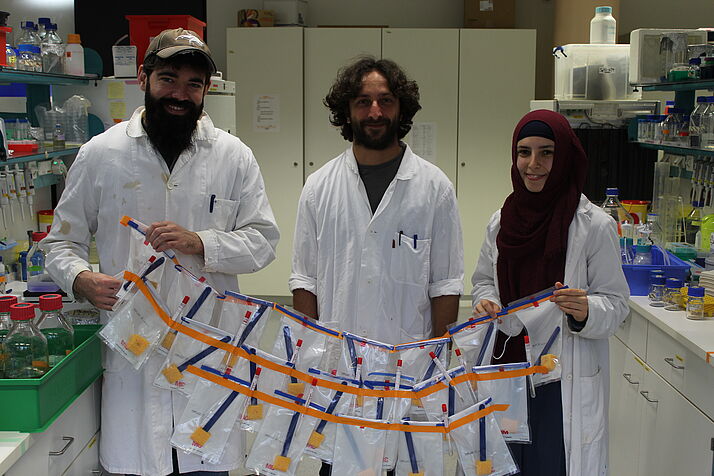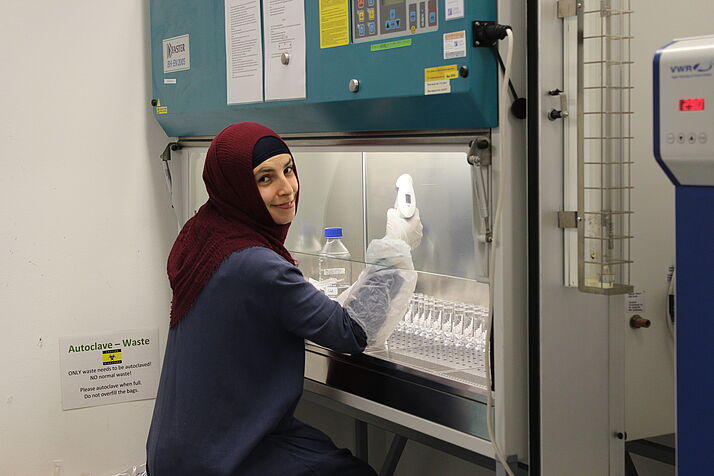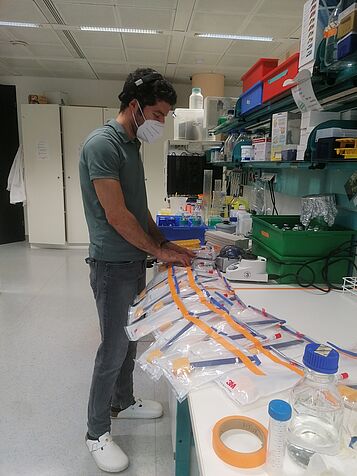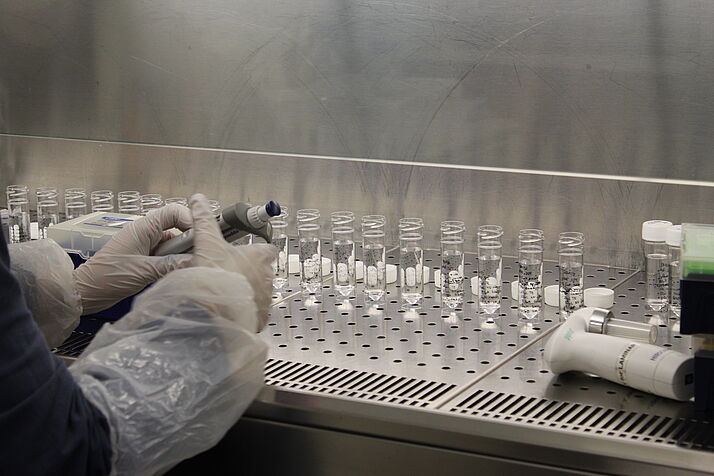Human skin-associated Archaea
Human skin-associated Archaea: Distribution, Diversity, Characteristics and Impact on Human Health
Background: The majority of all cells in the human body are microorganisms. Changes in the so-called microbiome have been associated with health problems, such as inflammatory bowel diseases or obesity. The human microbiome is composed of Bacteria, fungi, viruses and Archaea. Archaea resemble Bacteria in their shape, size and organization as prokaryotic cells, but constitute a separate branch in the tree of life with different molecular functions. Although Archaea can make up to 10% amongst other microorganisms and are considered to represent key stone species in the human gut (although now pathogenic representative has been detected so far), they remain understudied, due to methodical problems.
During Prof Moissl-Eichinger's work in the last years, she and her team have improved Archaea detection methods, and could show that the human-associated archaeome is much more diverse than expected. Archaea were found to be a substantial component of human nose, lung, gut and – skin. The skin is mainly inhabited by certain Archaea, the so-called Thaumarchaeota, which also exist in the natural environment, such as soil, where they are responsible for efficient ammonia-oxidation. The abundance of Archaea on skin varies from below detection limit (in a few subjects) up to 12%. The abundance and diversity was found to be linked to various parameters, including subject’s age and skin physiology. Prof Moissl-Eichinger and her team were as well able to detect archaea potentially associated with diseased skin (prurigo/psoriasis). As we face a significant lack of knowledge with respect to skin-associated archaea and their potential involvement in skin diseases, this project was created.
Hypotheses: We argue that Archaea are a stable component of the human skin microbiome. We aim to prove that they interact with bacteria, and that their abundance correlates with skin niche and physical parameters such as moisture, pH or even health-status. We are convinced that the skin archaea are physiologically active and show specific differences and adaptations (compared to their close relatives from environmental biotopes), allowing them to persist on human skin. We argue that Archaea are involved in health/disease processes of the human body.
Methods: We will combine several state-of-the-art methods, such as next generation sequencing, improved enrichment and cultivation, as well as highly sophisticated imaging techniques to gather information on different levels.
Innovation: This project is very innovative, as it combines different disciplines of research, including medical research (dermatology), microbiome research (study of the interaction of the human body with its microorganisms), and fundamental archaea research (study of environmental archaea). Within this interdisciplinary approach, we tackle the understudied archaeome of healthy and diseased persons, and we will retrieve important information on the function, genome and physiology of these unusual microorganisms on human skin, which would allow a first risk estimation, whether Archaea play an important role in human (skin) diseases.
Duration: 01.02.2018-31.07.2022
Funding agency: Austrian Science Fund (FWF): P 30796
Project leader: Prof. Christine Moissl-Eichinger, Christa Schleper
Participants: Christa Schleper, Josephine Weitemeyer, Maximilian Dreer, Andrea Tramontano, Ülkü Yüksel, Logan Hodgskiss
Our team and lab







